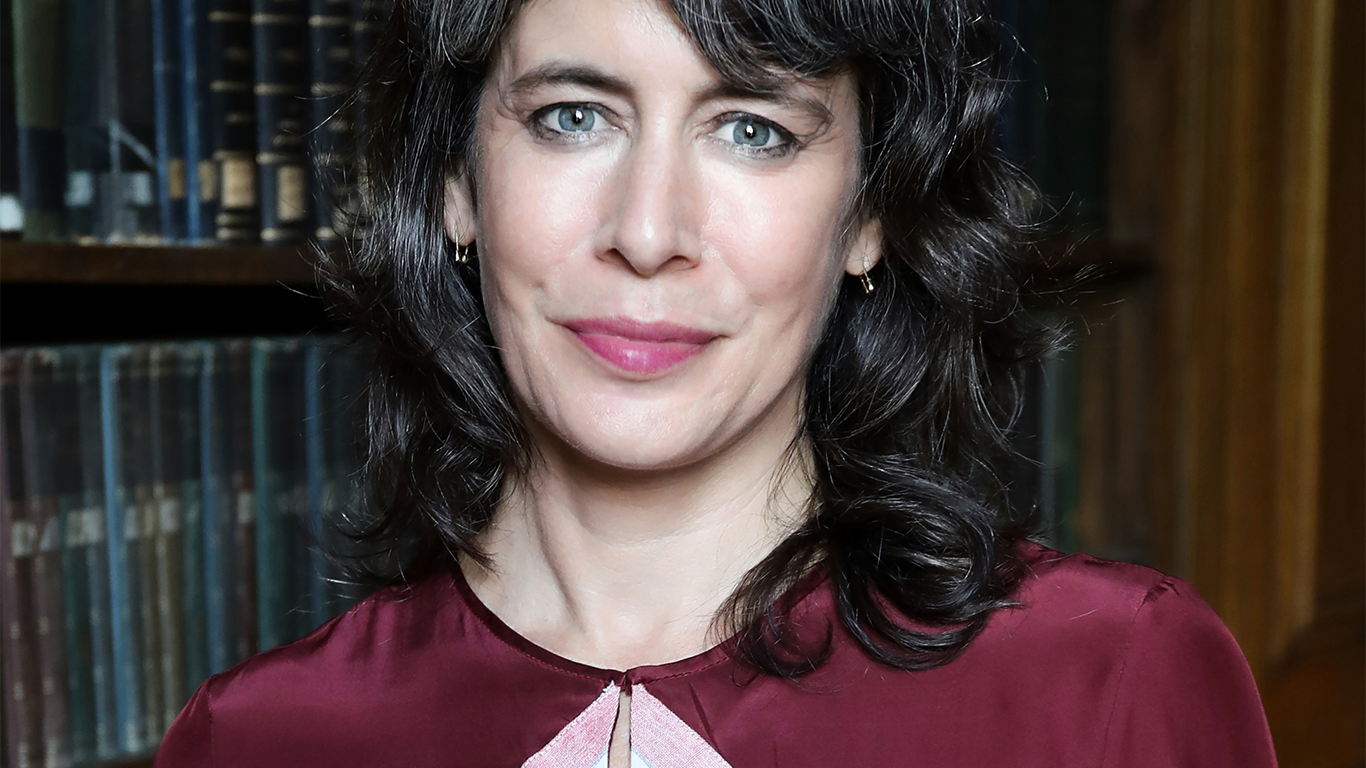Established in 1825, The National Academy of Design stands as a venerable institution championing artistic and architectural excellence in America. With a core focus on exhibitions, education, and scholarly inquiry, it celebrates the invaluable contributions of artists and architects to society.
Chief Curator Sara Reisman, renowned for her curation, education, and writing expertise, leads the institution’s curatorial programme. Drawing from her wealth of institutional knowledge and professional insight, Reisman’s curation of theme-based exhibitions has left an unforgettable mark on the cultural landscape of the arts, inspiring many to appreciate the beauty and power of creative expression.
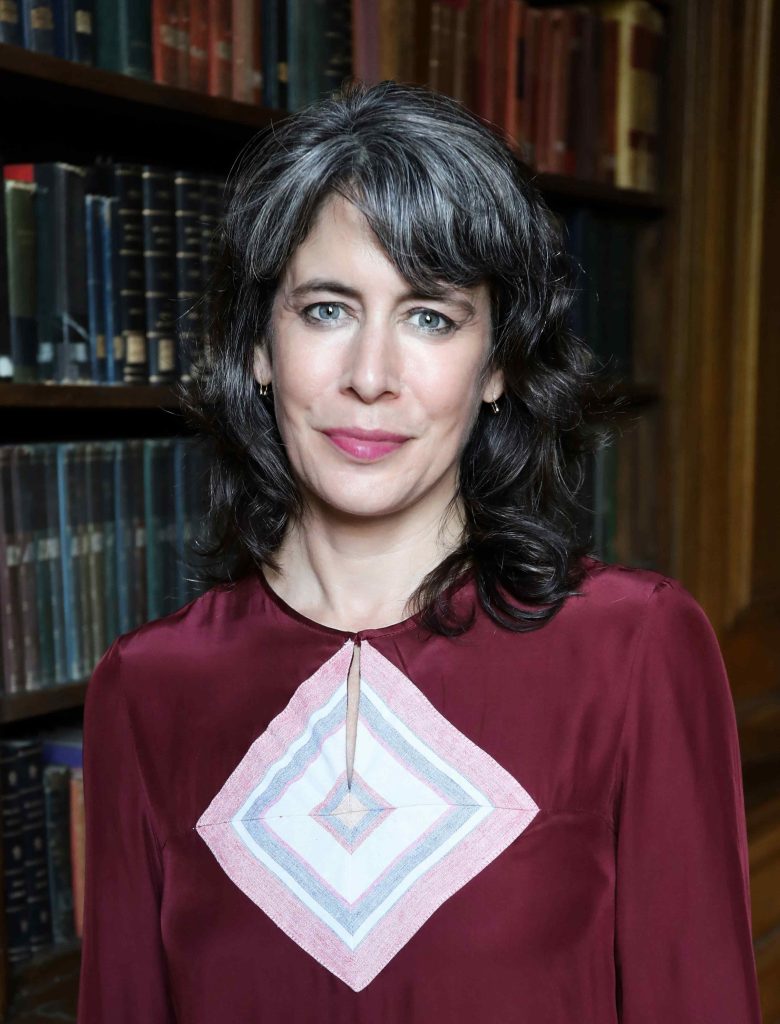
I think it’s important to savor the intellectual and creative aspects of the work which motivate a sense of care for and investment in the rest of the process
Sara Reisman, Chief Curator of the National Academy of Design
Reisman’s contributions to the arts transcend the gallery and institution, which is evident in publications like ‘Elia Alba: The Supper Club,’ a poignant exploration of identity and community published by Hirmer Verlag. Her influence resonates through the corridors of academia, where she has taught art history and contemporary art at the University of Pennsylvania and SUNY Purchase School of Art + Design. Since 2016, she has been enriching the discourse as a faculty member at the School of Visual Arts’ Curatorial Practice Masters Program, nurturing the next generation of cultural custodians.
Reisman’s journey towards excellence in curation began with a foundational education at the University of Chicago, followed by a transformative tenure as a Helena Rubinstein Curatorial Fellow at the Whitney Museum of American Art Independent Study Program from 2002 to 2003. Due to her dedication to artistic exploration and social justice, she has received residencies from organizations such as Art Omi, the Foundation for a Civil Society, and the Montello Foundation.
At The National Academy of Design, Reisman has curated well-received exhibitions such as “Drawing as a Practice,” a group exhibition centring on drawing as both the medium and practice connecting the many divergent points of interest that have contributed to the founding and history of the National Academy. This exhibition also marks the first activation of the Academy’s new home and exhibition space in Chelsea, New York. Most recently, Reisman curated “Sites of Impermanence,” showcasing a series of art and architectural works by the recently elected 2023 National Academicians. In this interview, we delve into Sara Reisman’s approach to curation and insights into the exciting world of exhibitions housed within The National Academy of Design.
Hi Sara, please introduce yourself to those who may not be familiar with your work. Share your journey into the arts and your decision to become a curator.
Sara Reisman: My journey into the arts goes back to my earliest memories as a child visiting the Walker Art Center in Minneapolis, where I grew up. My mother claims it’s the first place she took me when I was a newborn, and I later took classes there. She was always making art — mainly paintings, which were also in our home. Up til college, I thought I would be an artist. Through several of my first jobs in the art world in the mid- to late-1990s — for a private collector and Artists Space, among others — I came to understand the curator’s role as something more compelling to me than being an artist, because it was more interdependent than making work on my own.

by Deborah Solomon
I liked the idea of working in the service of and alongside artists, to give them a platform. I remember around 2000 reading Joseph Cornell’s biography, Utopia Parkway, and loved how he referred to himself as a curator of culture, in reference to the film screenings he organized at the Julian Levy Gallery. As an artist I worked with collage and assemblage and thought a lot about where my materials came from, who made them in the first place. That’s one of the reasons I wanted to curate rather than appropriate if that makes sense.
Can we explore your curatorial approach and philosophy, especially considering your extensive experience with diverse institutions and projects, including public art curation and community engagement?
Sara Reisman: My approach to curating is context-dependent; even the kind of work being shown determines how it’s curated. (Here I am thinking of André Lepecki’s 2017 essay Decolonizing the Curatorial, in which he writes about artworks like those of Lygia Clark’s that “ontologically resist the curatorial and its apparatuses.” In my experience, artworks often make clear where they belong in a space, and how they should be positioned, like objects moving in a seance.) There has to be a balance between curatorial vision — like realizing an idea that has been percolating personally and intellectually over time — and the venue, where there are always questions about the space’s historical trajectory and who are the stakeholders, whether it’s an institutional or public space or even an alternative space.
In my current role, the primary stakeholders are the artists and architects who have been elected into the Academy, many of whom will or have been part of exhibitions here. Equally important is the public, which is a fluctuating group, so the work of understanding who makes up the public is ongoing. A special aspect of the National Academy of Design is the historic nature of the organization, founded in 1825 by 15 artists and architects at a time when there were no art schools or museums as we know them today. The founders were aware of institutions in Europe that recognized artists and supported their cultural production; they wanted to emulate that here in the United States. For me, the weight of that history, however, underrecognized or irrelevant it might seem now, motivates me to think more carefully about how the art and architectural work we’re presenting can be situated in dialogue with history. Our next show will be the first in-person annual exhibition since 2015, to be held in our new space in Chelsea.
When that show was a regular feature of the Academy’s exhibition program, it was an opportunity for the public to survey the most recent, innovative artistic output. Maybe the historical importance of such a survey can be brought more into focus. An interesting challenge will be responding to the art and architectural works submitted to the Annual and coming up with a theme that is timely and inclusive. What wraparound theme will emerge once we’ve gone through the submissions?

As the former Director of New York City’s Percent for Art program, you managed numerous public art commissions. What criteria did you use to select artists and projects? How did you ensure that these public artworks resonated with the diverse communities of New York City’s five boroughs?
Sara Reisman: When I began in my role as director of the Percent for Art program, it seemed that the criteria guiding the program — to contribute aesthetically to the construction of public works, and to integrate artists into the design process — were somehow assumed to be understood by all. Where we commissioned and installed new permanent public art projects was determined by the city’s capital program, which builds new public works.
A few years in, I worked with the Commissioner of Cultural Affairs Kate Levin and members of the Public Design Commission to come up with more intentional and clear criteria, in order to focus the panel process more thoroughly on matters from selecting the artist to presenting more developed artworks to community boards and the Public Design Commission at City Hall. The official criteria we came up with included being responsive to each site, its users, function, and architecture—attending to the character of local communities, both culturally and aesthetically. As a curator, I was committed to bringing artists to projects whose work could expand the definitions of civic public art — here I think of a a few works: one by Mary Mattingly for a model netzero school in Staten Island; Ben Rubin’s Shakespeare Machine, a new media work that generates new Shakespearian texts from a logical algorithm at the Public Theater; and Mierle Laderman Ukeles’ Landing, a hybrid earthwork and landscape architectural work for Freshkills, a site which is transitioning from a landfill to a park. The community aspect of commissioning for the city doesn’t play out as people might think.
Because commissioned works might take anywhere from 2 to 10 years to be built (in tandem with the larger capital construction project that funds the Percent for Art artwork), the dynamics of a community are bound to change in that timeframe. I was also motivated by the opportunity to engage artists with large scale projects. Considering this and the fact that the city is required to incorporate permanent art into the design of spaces that are publicly funded, and/or accessible to the public – it means there is a huge opportunity to award commissions to working artists.
In your role at the Shelley & Donald Rubin Foundation, where you engaged deeply with art and social justice, what were the challenges and rewards of integrating social justice themes into art exhibitions? How do you assess their impact on public discourse and social change?
Sara Reisman: Working at the Rubin Foundation was the first time I understood what it meant to curate programmatically for a mission. The exhibitions I curated there flowed in a sequential way, like the first exhibition was about borders and globalization. Mobility and Its Discontents (2015)was thenfollowed by When Artists Speak Truth (2015), Between History and the Body (2015), In the Power of Your Care (2016), and Enacting Stillness (2016). Later shows were even more rigorously political, like Revolution from Without and Relational Economies: Labor Over Capital (both 2019) and To Cast Too Bold A Shadow (2020), which was about the impacts of misogyny on women identified artists.
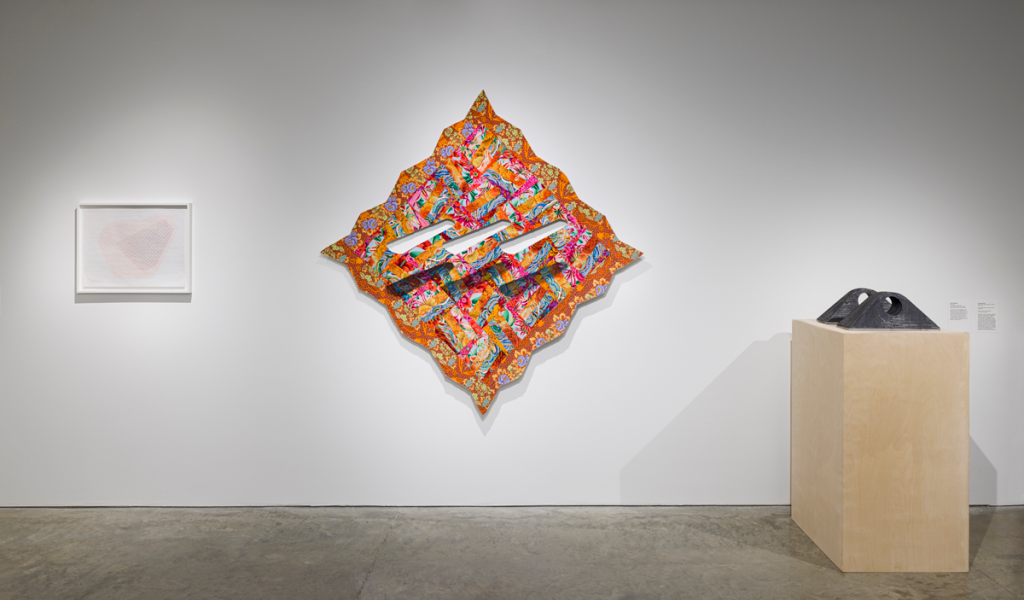
Photo: © Etienne Frossard.
Courtesy of National Academy of Design
The challenge was to find ways to curate poetically without being didactic. One of the biggest rewards was that a community of artists, activists, organizations, and educators from different backgrounds and areas of expertise converged around pressing issues of the day. A highlight was organizing a teach-in with Martha Wilson on artistic-activist strategies as part of the show The Intersectional Self in the spring of 2017. Included in the exhibition were several of Martha’s videos of what I would call “political drag” (her performing as Barbara Bush or Nancy Reagan), which were shown alongside artists like Catherine Opie, Patty Chang, Adrian Piper, Ana Mendieta, and Abigail DeVille.
For the teach-in, we hosted around 18 presentations by artists and collectives engaged with activist practices, which Martha closed out with a performance of Martha Does Donald. Over the years at the foundation, this momentum of increasing engagement by artists, students, writers, activities, and thinkers was extremely moving for me, and I hope many others.
In your editorial work for publications like ‘Elia Alba: The Supper Club,’ what is your approach to selecting and presenting artists’ works and ideas? How do you ensure that these publications complement and enhance the understanding of the exhibitions you curate?
Sara Reisman: I haven’t worked in many institutions that have had a dedicated publications department — maybe none — so my experience of editing book projects has been the result of there being an urgent reason for publishing that is tied to the project itself. For Elia Alba’s project, The Supper Club, she started officially hosting dinners in 2012, which involved gathering artists of color to discuss issues of race and representation in the art world. Initially three dinners were organized with support from Recess, bringing together sixty artists including Clifford Owens, Derrick Adams, Nicole Awai, Shaun Leonardo, Juana Valdes, and Dread Scott, among others. Elia’s idea was to bring together artists of color for dinner conversations, the transcriptions of which would be edited into a book featuring portraits of the same artists who were part of the conversations. As a white curator, I wasn’t meant to be part of the dinners, but was interested in how I could support the project’s evolution. A few years later when I began working for the Rubin Foundation, I saw an opportunity to activate the foundation’s gallery program there by working with Elia to continue The Supper Club dinners.
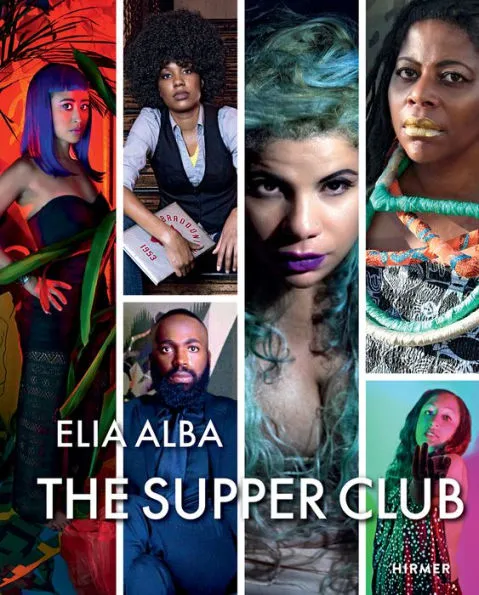
by Sara Reisman
We hosted more than 15 dinners over two years, each with approximately 20 guests/participants. Each had a theme that set the stage for conversation over a dinner that Elia cooked in the gallery’s kitchen. Her idea was that by offering food she could bring people together to speak candidly about themes based on critically engaged prompts about the complexity of race and its relationship to visual culture. Dinner conversation prompts included: Identity, Race, and Baltimore: A Tribute to Freddie Gray; Black Male Subjectivity: Representation, Communion, and Community; Finding Sanctuary: The Orlando Pulse Shooting;and What Would an HIV Doula Do? Long story short, Elia had a vision that started long before I was involved. As curator of the project at a later stage, I organized dinners with Elia and the team at The 8th Floor, and the book was necessary as a way of archiving the discussions alongside the iconic portraits she made of the nearly sixty artists who were at the core of the project.
The Supper Club was a special instance in terms of the book’s role in the project. I don’t think that every exhibition needs a book, but I am committed to writing discursively as part of the exhibitions that I curate in order to honor the artists and their artwork, while also finding ways to make their intentions accessible to viewers. I’m well aware that many people don’t have as much time to read as they used to, and a lot of writing doesn’t get read because distribution is such a huge lift, not to mention the strained attention economy. That said, writing is vital to my practice as a curator, even if it can be challenging to carve out the time and space to make it happen.
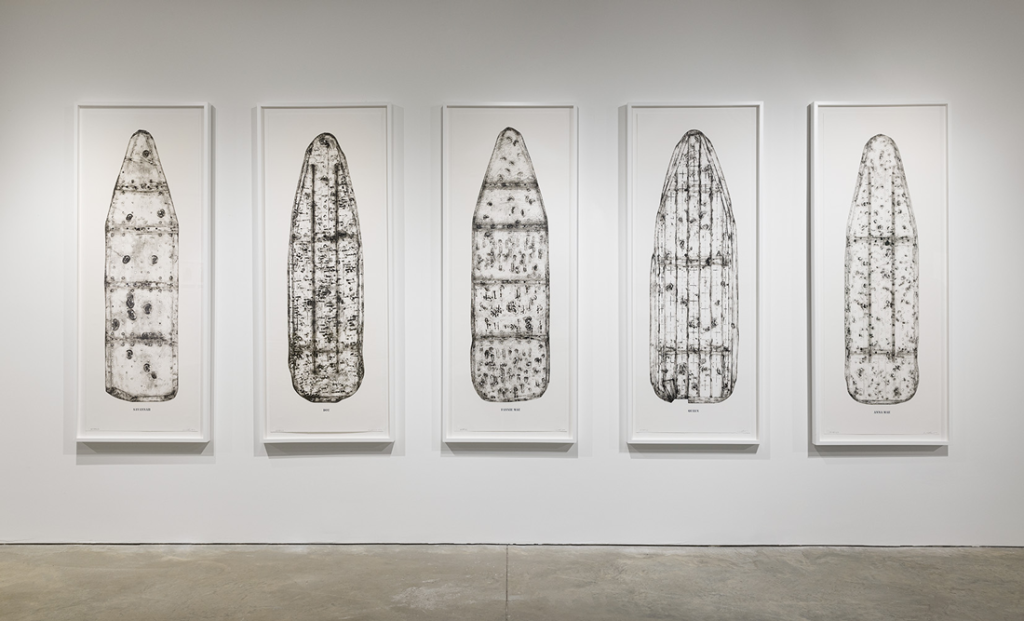
Photo: © Etienne Frossard.
Courtesy of National Academy of Design
The academy’s latest exhibition, ‘Sites of Impermanence,’ showcases a series of art and architectural works by the recently elected 2023 National Academicians. Can you tell us more about the essence of the exhibition and the works of these Academicians?
Sara Reisman: I was looking at the show with Mary Lucier, one of our National Academicians, and explained to her that, seeing this is the annual induction show featuring newly elected Academicians from the Class of 2023, the show is in effect co-curated with the Academy’s membership. My colleague, Associate Curator Natalia Viera Salgado and I didn’t select the artists and architects in the show. Rather, the Academy selected the exhibiting artists and architects for us through the annual election.
Looking at the group together, we identified some common threads: the precariousness of human experience and the mutability that art can engender within shared spaces, from the gallery to the built environment and the natural landscape; how their practices push against binary thinking and the dominance of dichotomies; the way their work blurs the boundaries drawn between nature and human, human and machine, spirit and object, architectural systems, and their constituent parts that defy classification. Together, their work prompts a critical reassessment of the origins of official “high culture” and the manifold modes of identification that make up the United States’ contemporary aesthetic landscape.
The exhibition itself is not conceived site-specifically — as much as I’d like to curate that way, it’s not realistic given the timeline of organizing the show over the last five months. That said, each exhibited art and architectural work refers to site as a location or a physical space and, in many cases, signals “site” as a discursive locus, or cultural framework. (I recently revisited Miwon Kwon’s writing on site-specificity and appreciated her use of the phrase “cultural framework” to refer to this kind of conceptual site.)The artists’ and architects’ artworks suggest an approach to time and contemporaneity that contends with the constant change and transformations that are particular to this era, and are shaped in part by gains and losses, progress and reversals, contributing to expanded notions of what retains cultural value over time. Sites of Impermanence is therefore a dialogue about the particular conditions that have led to this contemporary moment with a very uncertain future.
As leading practitioners in their respective fields of art and architecture, the 2023 Class of National Academicians show how powerful art and architecture can be as forces that can radically change perception, by design or by discovery, divining new meaning from familiar objects, materials, conceptual tropes, and physical locations.
Building on those questions, are there any particular works in the exhibition that stand out to you and why?
Sara Reisman: The Academy hosted a talk this past week on February 21 organized by our programs department, In Tension: The Function of Body and Space, a conversation between Torkwase Dyson and Sarah Oppenheimer and moderated by Untapped journal’s editor Tiffany Jow. Each of the two artists works abstractly, critically engaging with space and its limits, and how space — public, private, architectural, social, infrastructural — is imposed on the body. Dyson’s multi-sensory works propose liberatory spaces conceived to reshape the dynamics of how autonomy can be perceived. On view are a series of Dyson’s drawings that are in direct dialogue with theorist Saidiya Hartman’s 1997 book Scenes of Subjection: Terror, Slavery, and Self-Making in Nineteenth-Century America. Dyson’s drawings propose multiple combinations of what she refers to as hypershapes, distilled geometries drawn from her reading of the architectural history of Black liberation.

Sarah Oppenheimer, February 21, 2024.
Photos by Rebecca Smeyne
The origins of Dyson’s shapes include a curve that represents the hull of a slave ship, in reference to fugitive slave Anthony Burns; a rectangle for the box that shipped Henry “Box” Brown to freedom; and a triangle for Harriet Jacobs who lived for seven years in a garret. Dyson considers this geometric coding to be connected to liberation strategies that suggest more sustainable and livable infrastructures. Each of her three primary shapes represent an architecture that enabled liberation.
Sarah Oppenheimer’s piece I-121-4030_N1-002 (2022) is less visible in the gallery until you start to take in the infrastructural details. The piece intervenes at several points into the gallery’s central wall, as well as extending along several of the lighting tracks along the ceiling. The full effect of the piece requires viewer participation, sliding a metal ‘input’ that slides from left to right and shifts the position of lighting on each side of the gallery’s central wall. The subtlety of Oppenheimer’s touch belies an intricate understanding of engineering, electricity, and how galleries and museums are traversed by the public. I like how Oppenheimer and Dyson’s works trouble and disrupt our understanding of infrastructure, from architecture, both globally and historically, to the specificity of the cultural sphere and how its spaces are engaged.
Willie Cole’s Five Beauties Rising (2012) is a breathtaking meditation on the slave trade and the generational effects of its oppression. A suite of five human scale prints made from five different found ironing boards, each print is dedicated to specific women in Cole’s family who were domestic workers. In my research I read that Cole came across an image of the map of a slave ship as a child and connected that with the shape of an ironing board. His masterful reuse of domestic and gendered objects is just stunning.
Looking ahead, what emerging trends or challenges do you foresee in curatorial practice? How might these influence your future projects or the direction of the National Academy of Design?
Sara Reisman: I’m going to answer this by reflecting on what I see in the context of teaching (something I’ve been doing since 2004). When I was a curatorial fellow at the Philadelphia ICA, I co-taught an undergraduate curatorial studies class at University of Pennsylvania, and since 2016, I’ve been teaching at SVA in the curatorial practice MA program. When I was first approached about teaching at SVA’s curatorial program, I remember thinking that the growing number of curatorial training programs would produce a curatorial work force that would quickly exceed the number of relevant jobs in museums and galleries.
I think this situation has created a dynamic in which curatorial practice has had to move beyond museums and galleries and conventional art spaces, to include more community and socially engaged curatorial roles. I see a shift in thinking about where serious curatorial work is situated, in spaces where art is being engaged to socially transformative ends. An example of this is Ruth Noack, who served as curator of documenta 12. She was engaged as curator of The Corner at Whitman-Walker, a community health center in Washington DC. This was a space I heard about just before and during the pandemic; I think curatorial work has a larger role to play if curators, and institutions can think more experimentally and progressively about where this work can take place, and where it has value.
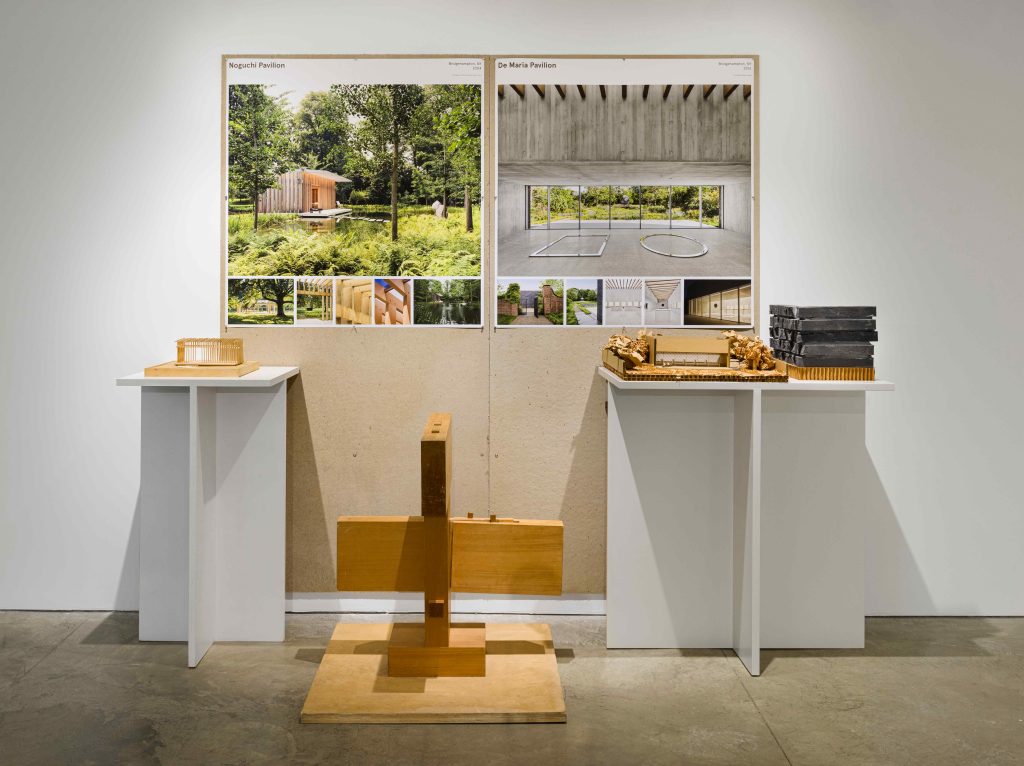
Photo: © Etienne Frossard.
Courtesy of National Academy of Design
In light of the evolving role of curators in the contemporary art world, particularly influenced by figures like Harald Szeemann, how do you perceive the role of the curator as an artist in your own practice?
Sara Reisman: Harald Szeemann has certainly had an indirect influence on my work. I only became aware of his trajectory after I began curating independently, but it’s because of figures like him that several generations of curators have been able to conceive of the possibilities for curating extra-institutionally—and outside conventional art spaces.
My path to curating began with artmaking so I appreciate that exhibition making can come from an artistic impulse and that artists have much to contribute to curating. I recently curated Two Grains of Wheat, a show inspired by Walter Benjamin’s notion of everyday spirituality at 601Artspace, a space on the Lower East Side that exemplifies this blurring of, or overlap between, the roles of the artist and curator. 601Artspace is run by artists (everyone working there is an artist, including the founder), and the space presents independent curatorial projects that wouldn’t likely be realized anywhere else. I believe that when curators think like artists, exhibitions become more interesting.
How do you balance the traditional responsibilities of curation with the creative and interpretive aspects that are now often expected in contemporary exhibitions?
Sara Reisman: In no particular order, the traditional responsibilities of curation include research, developing concepts and language for an exhibition (i.e. a proposal), identifying artists and artworks, communicating with artists and lenders about proposed artworks, securing loans, writing press materials for communications, doing studio visits to finalize the selection of works, coordinating with lenders, organizing transportation of works, determining installation specifications, writing an exhibition essay, generating didactic materials for the gallery, designing the installation….what have I missed? I will note that much of this work can be distributed across several departments in an institution. Over the course of my career I have done all of the above, in certain jobs only the top level curatorial conceptual work, and in others, more of the logistics associated with curating.
Increasingly, there is an expectation for programming to accompany exhibitions, along with having a social media presence to promote shows. In the last 10 years I’ve been convinced that activating exhibitions through programming is essential and as important as the exhibition itself. What’s the point of presenting work without generating discourse in relation to the exhibition? For me, the balance can only be achieved by staying on the side of engagement with artists and architects and the material, process, and conceptual underpinnings of their work.
Many curators reading this will know that most of the curatorial process ends up being administration and logistics so I think it’s important to savor the intellectual and creative aspects of the work which motivate a sense of care for and investment in the rest of the process.
Lastly, what does art mean to you?
Sara Reisman: Art is the lens through which we perceive the world. It encompasses aesthetics, communication, politics, social relations, and more. Art elevates and transforms the everyday. Art is life.
©2024 Sara Reisman


